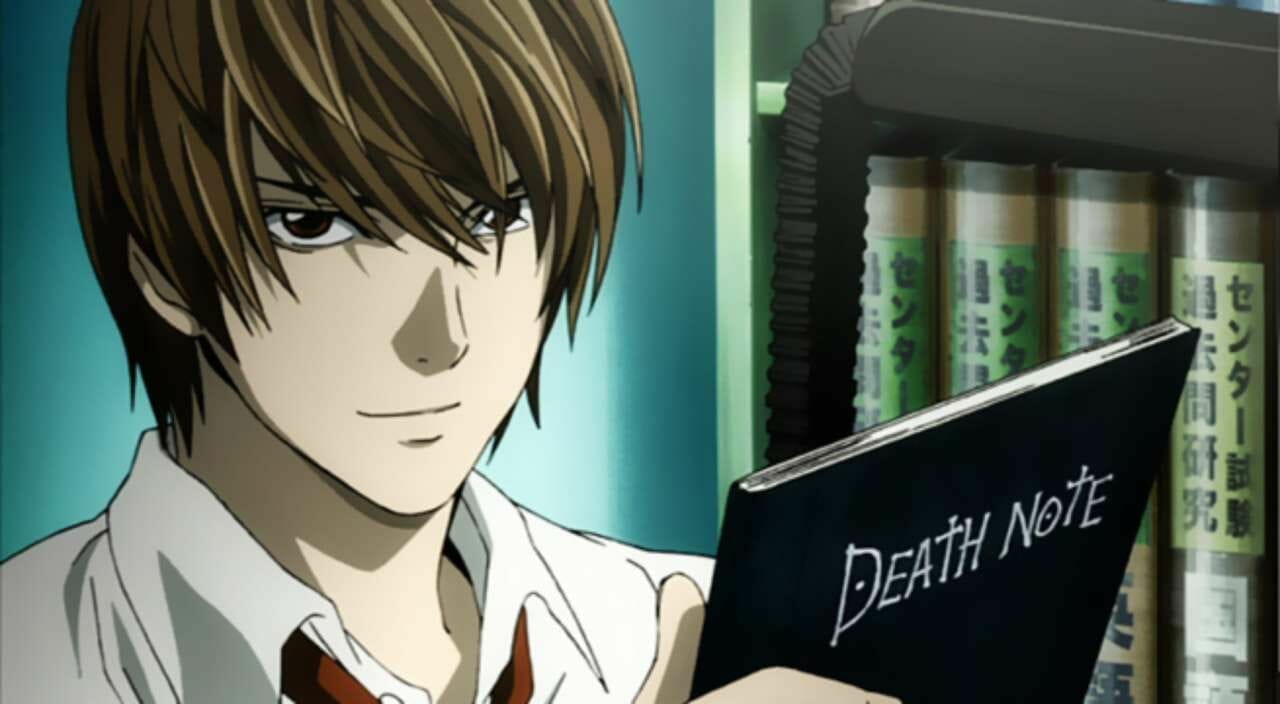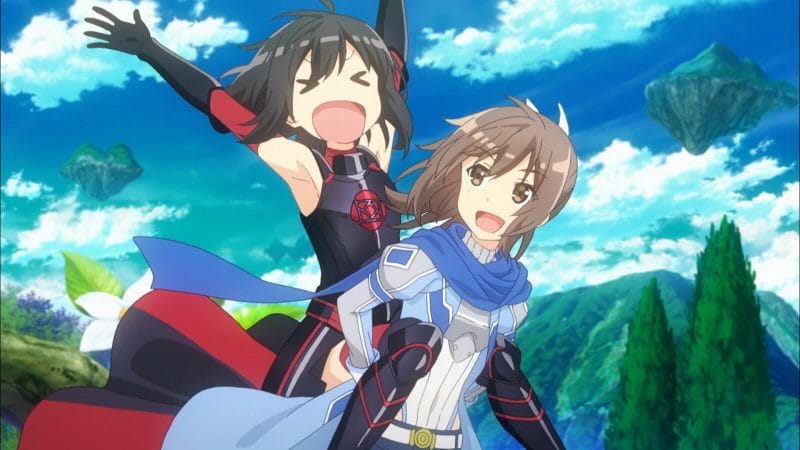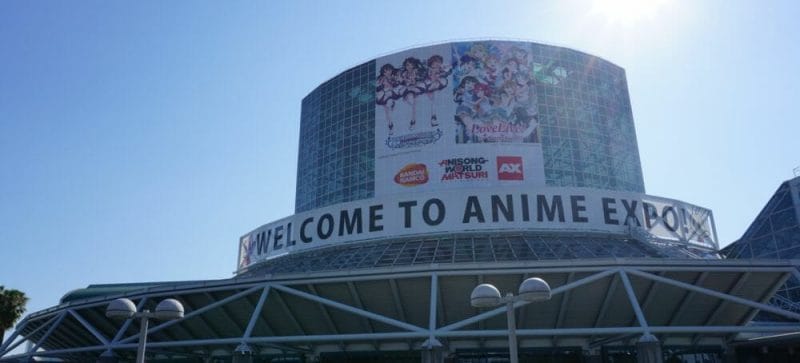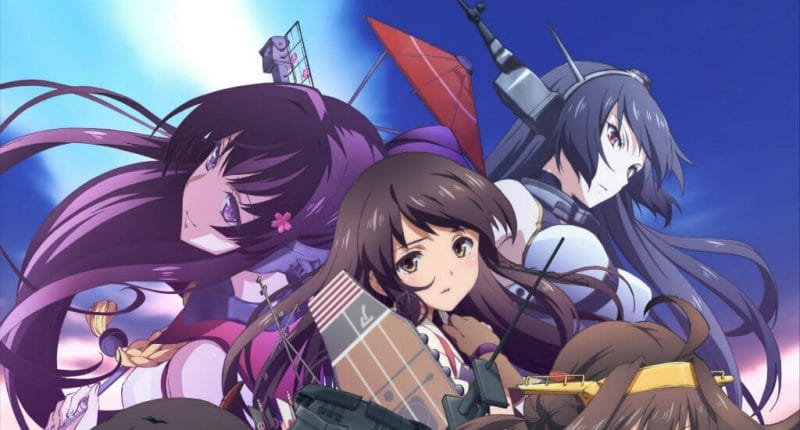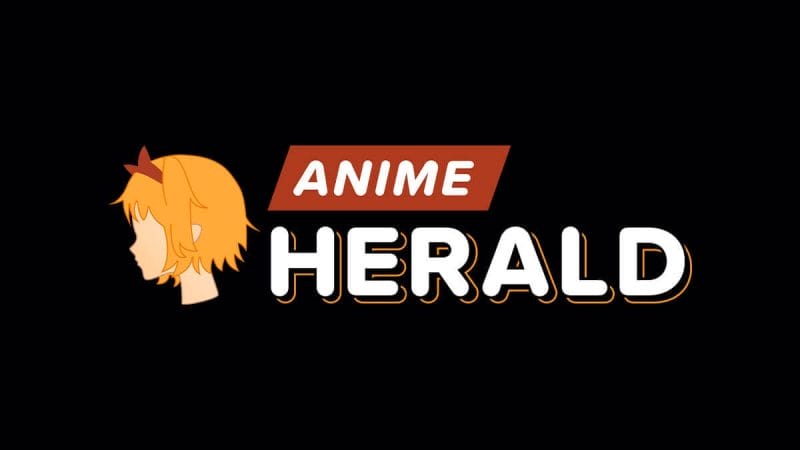[et_pb_section fb_built=”1″ _builder_version=”3.24.1″][et_pb_row _builder_version=”3.24.1″ collapsed=”on”][et_pb_column type=”4_4″ _builder_version=”3.24.1″][et_pb_text _builder_version=”3.24.1″]
Part 1 of a two-part series. The first part was published on June 4, 2019.
[/et_pb_text][/et_pb_column][/et_pb_row][et_pb_row _builder_version=”3.24.1″ collapsed=”off”][et_pb_column type=”4_4″ _builder_version=”3.24.1″][et_pb_text admin_label=”Text – Part 001″ _builder_version=”3.24.1″]
Now that we have a baseline for what melodrama is and how gender norms played a role in making it commonly seen as a feminine way of storytelling, let’s examine how that gender divide is actually a huge load of bunk. I mean, Go Nagai, a man who created a series about a naked schoolgirl superhero who beats up pervert teachers, was using melodramatic tropes all the way back in 1972 with Devilman. This was a series that came down entirely to the relationship between the two main leads (something carried over in the modern 2018 adaptation Devilman Crybaby).
[/et_pb_text][et_pb_text admin_label=”Text – Part 002″ _builder_version=”3.24.1″]
Over the years, the west exhibited a blind spot to this history with regards to male targeted manga and melodrama. It inevitably reached a point in the early 2000s, where one could start to see the gender divide beginning to melt away. The largest driver of this phenomenon was Tsugumi Ohba’s Death Note, a manga from Weekly Shonen Jump that did not fit in with what most people in the west knew of the magazine.
Remember that Weekly Shonen Jump was primarily known for Dragonball Z, Naruto, One Piece, and Bleach at the time.These were all series with a heavy focus on fights and action. 2003’s Death Note stood out for being a title based around psychological battles, where one character tried to kill people with a book that would end someone’s life once their name was written in it. It took the Stand formula of JoJo fights, where the rules of the powers and character mindsets were just as important as the powers themselves, and removed the traditional battle part. Basically, imagine the D’Arby Sr. gambling confrontation of Stardust Crusaders, only it lasts for an entire series. Despite this, the series still hooked readers by maintaining the same sort of energy of a battle manga through the writing and art of Takashi Obata. It was still very much about rivals clashing and excitement, but punches were traded for tricks and bodies for egos.
[/et_pb_text][et_pb_image src=”https://www.animeherald.com/wp-content/uploads/2019/06/Death-Note-001-20190615.jpg” admin_label=”Image – Death Note” _builder_version=”3.24.1″][/et_pb_image][et_pb_text admin_label=”Text – Part 003″ _builder_version=”3.24.1″]
Death Note functioned in a similar way to Private Actress, focusing on battles of minds and wills, where everything was decided on reading the other person and manipulation. Now, though, the stakes were almost always life or death, and everything was portrayed like a shonen battle manga fight, complete with ridiculous expressions and splash panels. The anime went a step further, with an overblown presentation that turned even eating a potato chip into a visual feast that sold the intensity that Light was feeling as he managed to hide his identity from L. Despite Ohba’s writing being notoriously sexist (one need only look at the character of Misa, a boy-crazy girl who was created because they needed someone “stupid” to move the plot), the series had a fairly large female fanbase, not unlike JoJo’s Bizarre Adventure. Both series utilize very similar storytelling tricks, and both dove deep into melodramatic techniques. Emotional logic became just as important as the logic behind the functions of the powers in the story. They also both had a lot of pretty boys, true, but that only gets you so far. There has to be something more to keep you there, and both works had it, telling stories that appealed to wider than usual audiences.
A few years later, Code Geass and Gurren Lagann hit the airwaves, The works, which debuted in 2006 and 2007 respectively both proved to be massive hits that still draw crowds to this day. They also introduced mecha-loving audiences to storytelling tropes and styles they weren’t that used to, as the genre was mostly saturated by Gundam-likes and EVA take-offs at the time, all of which proved to be more somber affairs. Of course, those stories were emotional, but they generally aimed to add a layer of realism to a fantastical premise. Melodrama is very much not aiming for realism.
[/et_pb_text][et_pb_image src=”https://www.animeherald.com/wp-content/uploads/2019/06/Code-Geass-001-20190615.jpg” admin_label=”Image – Code Geass” _builder_version=”3.24.1″][/et_pb_image][et_pb_text admin_label=”Text – Part 004″ _builder_version=”3.24.1″]
Code Geass was a complicated political thrill ride with a gigantic cast of characters, all with their own motivations and plots that made new alliances and betrayals constantly. It was a soap opera on hyper-drive, with giant robots and war scenes that serve to create larger stakes for the world, which the character drama fed into. All the eye magic and mech fights ended up playing second fiddle to the mind games and heated philosophical debates, though.
Gurren Lagann, on the other hand, was a much simpler series to follow. Instead, it switched up the premise every arc, and used loud characters and kinetic, almost wacky fights to inject every scene with energy and passion. It was one of the rare “manly” series that managed to find a big western audience, celebrating masculinity in an extremely emotional way that many of its western audience never knew was possible. It was a show where men shed manly tears: a taboo that we still have issue doing away with in 2019.
[/et_pb_text][et_pb_image src=”https://www.animeherald.com/wp-content/uploads/2019/06/Gurren-Lagann-Anime-001-20190615.jpg” admin_label=”Image – Gurren Lagann” _builder_version=”3.24.1″][/et_pb_image][et_pb_text admin_label=”Text – Part 005″ _builder_version=”3.24.1″]
Death Note got the ball rolling, but these two series really broke down the wall with regards to the way western anime and manga fans viewed melodrama – even if they didn’t know it yet. These were series which were “okay” to like as men, but a lack of exposure to the series that both heavily cribbed from (mainly super robot shows) and their female audience targeting counterparts meant that a lot of these fans didn’t realize just where these fresh new works got their style. They also both shattered preconceptions that melodrama was shallow.
Code Geass‘ plot structure is very messy in a lot of respects, but what wasn’t messy was the show’s clear political beliefs and themes. It was a very loudly political series that explored racism, nationalism, social Darwinism, the cycles of war, ideological appeals, systems of government, and even drew parallels to real historical developments (with R2 leaning heavily into the founding of the USA as a major parallel, not to mention the Hiroshima nuclear bombing). It had a clear message by the end and used its time to explore its various ideas and build that message. The character drama was the hook, but there was meat to be found, as well (though one can debate on how well those ideas were handled).
Gurren Lagann was also very clearly about masculinity, being very loud and upfront with its symbolism and intent through the least-subtle phallic imagery ever with its signature drills that pierced the heavens. It even had an entire second half that argued against the trends of realistic and angsty mecha shows that became so popular after Neon Genesis Evangelion. It used a lot of ideas familiar to super robot and shonen battle fans, including overcoming challenges and personal growth, and made a show that was entirely about the value of such ideals and the need for them. The fact that the title used melodramatic, overblown dialog to make its points, contrasting angsty and down-to-Earth characters with their hot-blooded, melodramatic counterparts. It was a series that decried apathy and argued that there was value in directness and clear purpose, and these qualities were necessary not just to grow, but for the betterment of society. The big robots with bigger drills were phallic symbols, for sure. They were also representations of willpower and hope, though, showing these silly, childish ideas had power to them and shouldn’t be cast aside. The fact that everything only got bigger and bigger as the series went only pushed its thesis more effectively.
[/et_pb_text][et_pb_image src=”https://www.animeherald.com/wp-content/uploads/2019/06/My-Hero-Academia-Still-001-20190615.jpg” admin_label=”Image – My Hero Academia” _builder_version=”3.24.1″][/et_pb_image][et_pb_text admin_label=”Text – Part 006″ _builder_version=”3.24.1″]
We’ve only gone further in the direction these works started since, with My Hero Academia sticking out as one of the biggest recent shonen hits to utilize the same sort of writing and visual storytelling. While still a battle manga, the core conflict is built around character dynamics and emotional logic, mirroring the growth of lead would-be hero Deku with the young head of the League of Villains Shigaraki. Personal philosophy drives every fight even more than the powers do, especially with Deku and All-Might’s “All for One” Quirk, which grants even more incredible strength with extreme emotional drive. Every emotion is big as well, driving home the danger the kids and heroes find themselves in and seriously exploring themes of trauma.
Weekly Shonen Jump has also started going through massive changes, as more and more manga hit its pages that crib from the non-battle battle manga style that Death Note helped popularize (alongside hits like Kaiji). The Promised Neverland has become one of the magazine’s bigger hits by simply removing battles, and keeping emotions and stakes high through vulnerable characters who have to use their wits to survive. Heck, we even have a series not that unlike Private Actress in premise there now, with the psychological acting drama Act-Age. The magazine’s new editor has been trying to push the magazine in a new direction, realizing that there’s value in series that can appeal to a wide range of demographics, and melodrama storytelling techniques have become more common throughout the whole line-up.
There still is a stigma attached to the concept of melodrama, but the definition of that concept is wildly outdated, and fans are starting to realize this. There’s value in reserved stories that want you to read more into them, but that doesn’t mean tales that are loud with intent or style are lacking in depth, either. We’re at a point where the gender divide is starting to vanish completely, and the exciting possibilities that reality offers are just starting to be realized. Now, all that’s left is for definition and language to catch up.
[/et_pb_text][et_pb_cta title=”Support Anime Herald on Patreon” button_url=”https://www.patreon.com/bePatron?u=8646351″ url_new_window=”on” button_text=”Become a Patron” admin_label=”Call To Action – Patreon” _builder_version=”3.19″ background_color=”#222c35″ custom_button=”on” button_bg_color=”#f96854″ saved_tabs=”all” button_text_size__hover_enabled=”off” button_text_size__hover=”null” button_one_text_size__hover_enabled=”off” button_one_text_size__hover=”null” button_two_text_size__hover_enabled=”off” button_two_text_size__hover=”null” button_text_color__hover_enabled=”off” button_text_color__hover=”null” button_one_text_color__hover_enabled=”off” button_one_text_color__hover=”null” button_two_text_color__hover_enabled=”off” button_two_text_color__hover=”null” button_border_width__hover_enabled=”off” button_border_width__hover=”null” button_one_border_width__hover_enabled=”off” button_one_border_width__hover=”null” button_two_border_width__hover_enabled=”off” button_two_border_width__hover=”null” button_border_color__hover_enabled=”off” button_border_color__hover=”null” button_one_border_color__hover_enabled=”off” button_one_border_color__hover=”null” button_two_border_color__hover_enabled=”off” button_two_border_color__hover=”null” button_border_radius__hover_enabled=”off” button_border_radius__hover=”null” button_one_border_radius__hover_enabled=”off” button_one_border_radius__hover=”null” button_two_border_radius__hover_enabled=”off” button_two_border_radius__hover=”null” button_letter_spacing__hover_enabled=”off” button_letter_spacing__hover=”null” button_one_letter_spacing__hover_enabled=”off” button_one_letter_spacing__hover=”null” button_two_letter_spacing__hover_enabled=”off” button_two_letter_spacing__hover=”null” button_bg_color__hover_enabled=”off” button_bg_color__hover=”null” button_one_bg_color__hover_enabled=”off” button_one_bg_color__hover=”null” button_two_bg_color__hover_enabled=”off” button_two_bg_color__hover=”null” global_module=”59498″]
This article is only possible thanks to our amazing Patrons. It’s through their help that we’re able to offer a high-quality publication that’s ad-free and free to access.
Consider backing us on Patreon for as little as $1 a month, to support new content from our amazing team, and ensure that we can keep talking nerdy to you for some time to come.
[/et_pb_cta][/et_pb_column][/et_pb_row][/et_pb_section]


